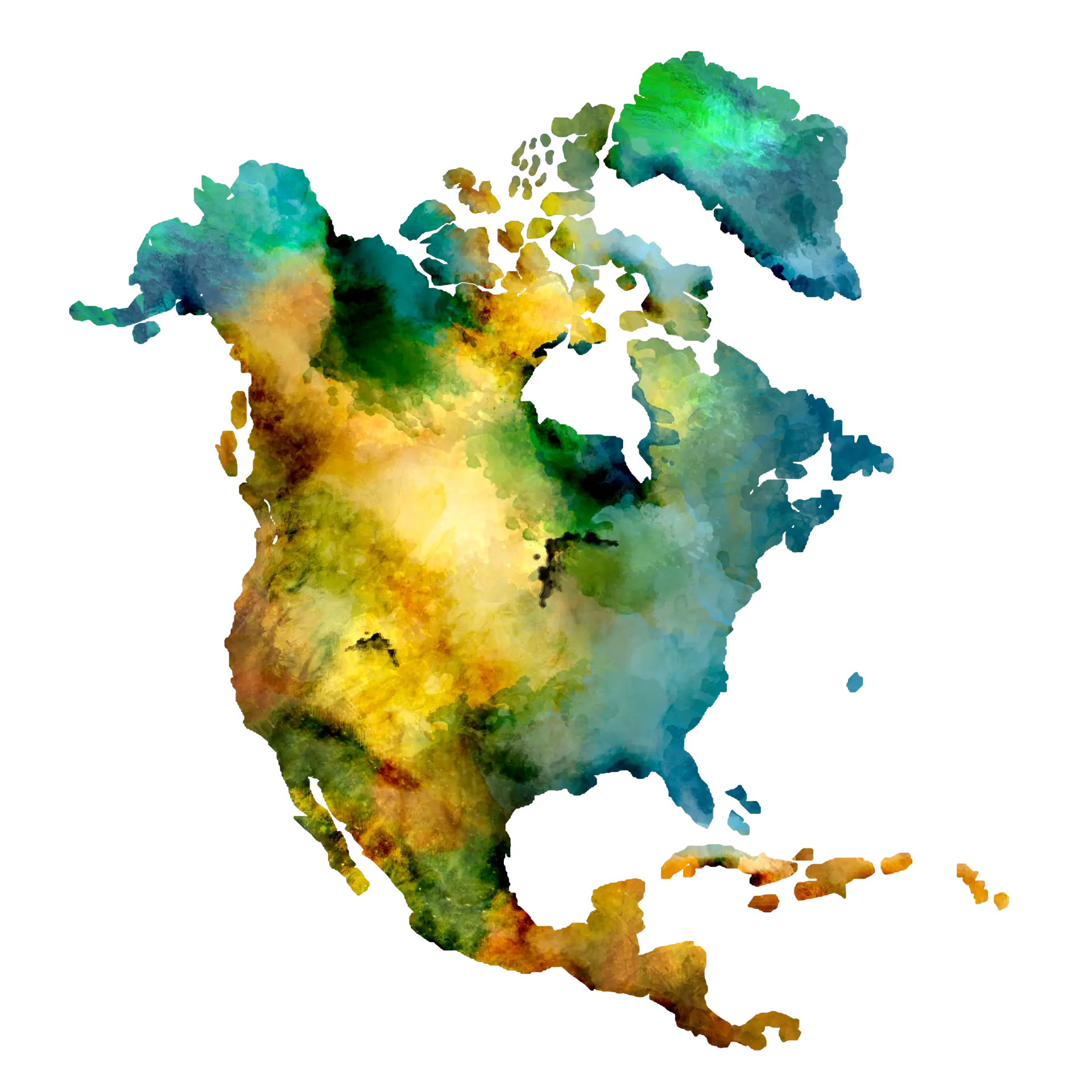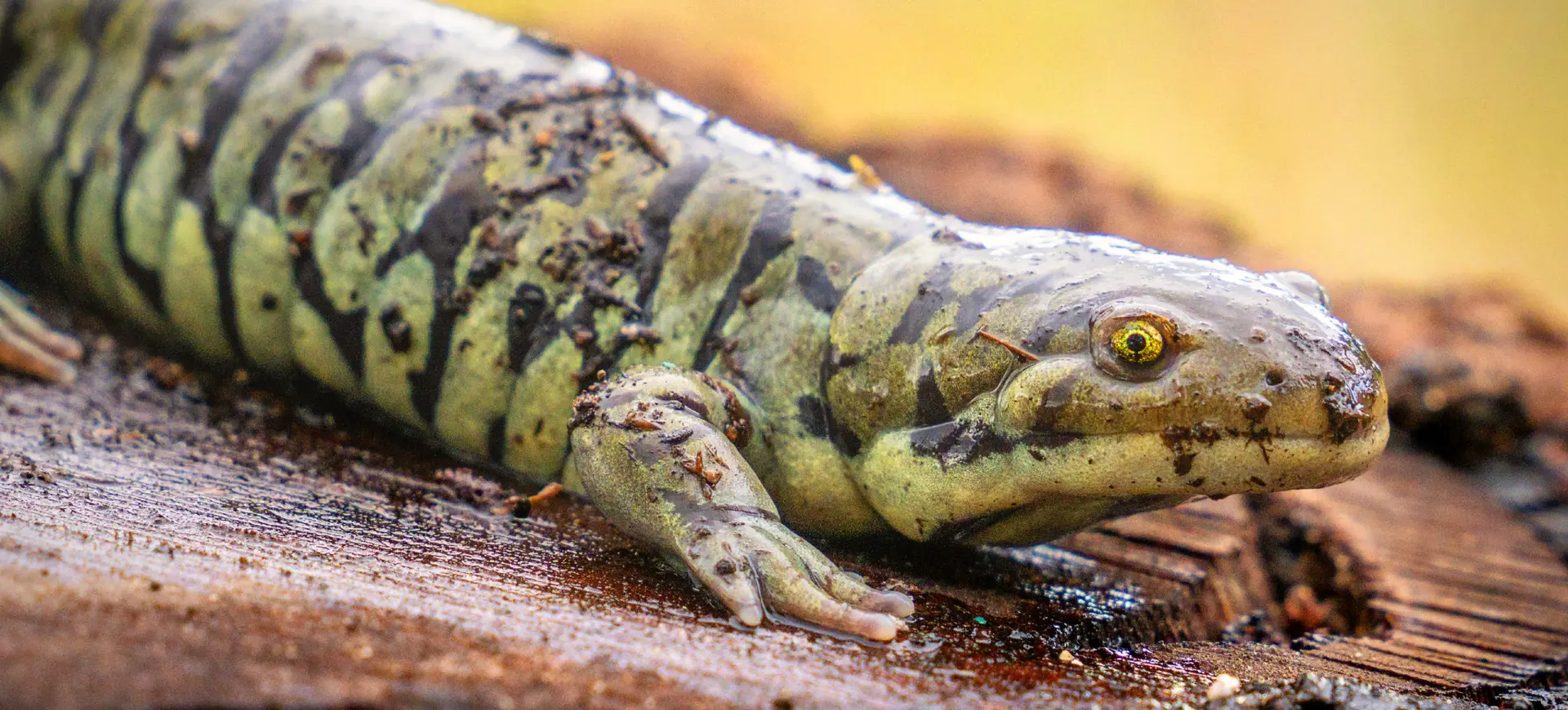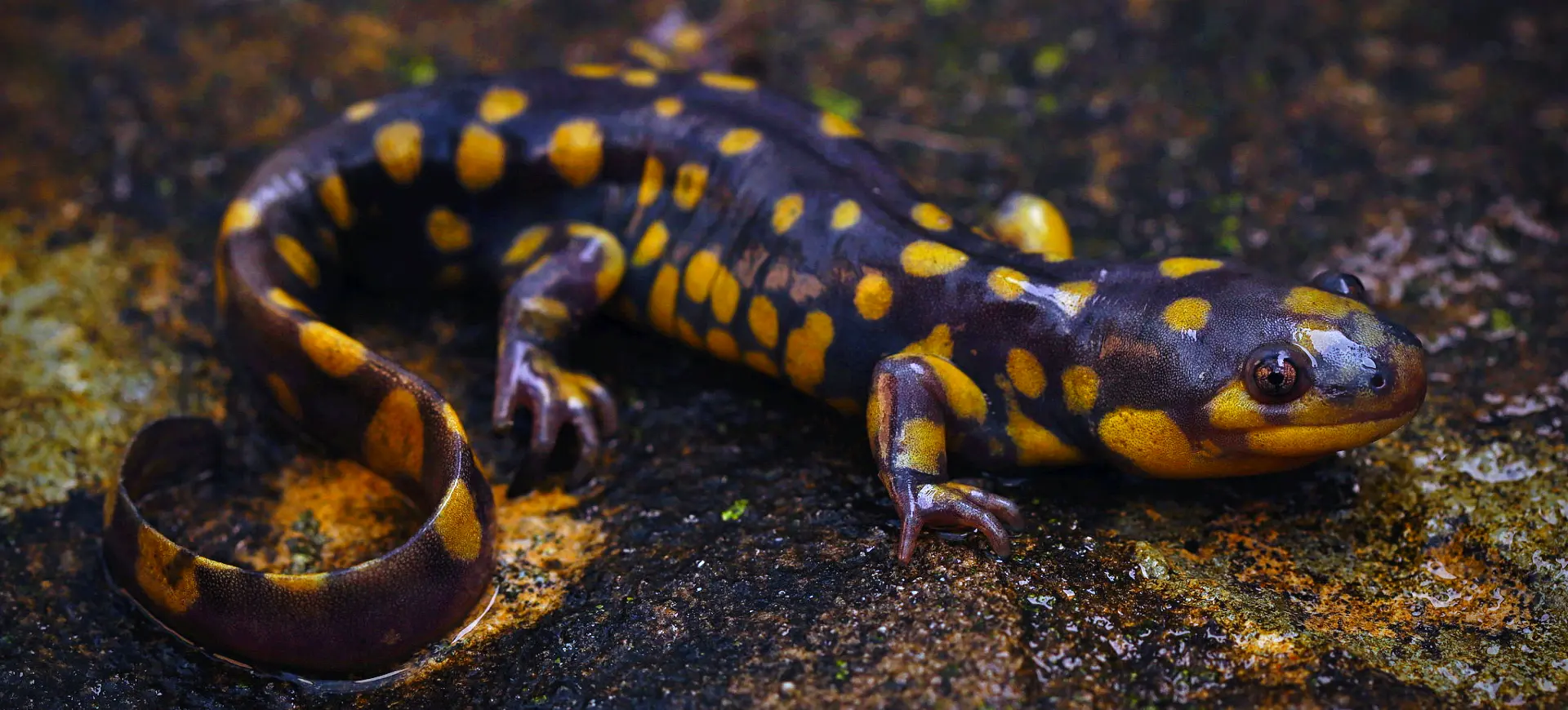Overview
The axolotl (Ambystoma mexicanum) is a critically endangered amphibian native to Mexico’s freshwater lakes and canals. Unlike most amphibians, axolotls retain their larval features throughout their lives in a phenomenon known as neoteny, which includes external gills and a finned tail. Their unique ability to regenerate entire limbs, spinal cords, and even parts of their hearts and brains has made them a subject of intense scientific research. Axolotls are colloquially called “Mexican walk” ng fish,” though they “are not fish but aquatic salamanders.
Axolotls have historically inhabited Lake Xochimilco and Lake Chalco, but human activity has severely reduced their habitat to a fraction of its original size. They prefer slow-moving waters rich in vegetation where they can find cover and hunt for prey. Once common in local ecosystems, axolotls are now primarily found as exotic pets in captivity for research and conservation. Their numbers have plummeted in the wild due to habitat destruction, pollution, and competition from invasive species like tilapia and carp.
These amphibians are known for their wide variety of colors, including wild-type (dark with golden specks), leucistic (pale pink with red gills), albino, golden albino, and melanoid (all black). Despite their charismatic appearance, axolotls face a bleak future in the wild, with ongoing conservation efforts attempting to restore their habitat and protect the remaining populations. Their survival is critical to maintaining the biodiversity of Mexico’s freshwater Mexico’sms and advancing regenerative medicine research.
Taxonomy
Kingdom
Phylum
Class
Order
Family
Genus
Species
Type
Current distribution:
The axolotl is now critically endangered in its natural environment, primarily surviving in the remnants of the ancient Lake Xochimilco, which has been reduced to a series of canals near Mexico City. Several factors have contributed to its endangered status, including urbanization, habitat destruction, and water pollution. The rapid expansion of Mexico City has encroached upon the axolotl's natural habitat, converting freshwater sources into built-up areas and significantly impacting water quality. The canals where they reside are often polluted with waste and toxic chemicals, further threatening their survival.
Conservation efforts are being deployed to protect the dwindling numbers of this extraordinary species, but these efforts have been largely unsuccessful in reversing the trend. Many conservationists advocate for immediate and aggressive interventions, including habitat restoration and anti-pollution measures, to protect the existing population. However, a lack of public awareness and financial constraints hamper these efforts. The grim reality is that without immediate action, the axolotl risks extinction in the wild, surviving only in laboratory settings and home aquariums.
Physical Description:
Axolotls are medium-sized amphibians with an average body length of 9 to 12 inches (23 to 30 cm). They possess a long, smooth body with four short legs, a wide, flat head that houses lidless eyes, and a characteristic “smiling” mouth. Their external gills are feathery and extend from the back of their heads, allowing them to extract oxygen from the water. Their skin is soft and moist, often mucous, and exhibits various color morphs depending on genetics and environmental conditions.
In addition to their external gills, axolotls have rudimentary lungs and can absorb oxygen through their skin. Wild-type axolotls are dark brown or black with specks of gold, effectively camouflaging them in murky waters. Domesticated morphs, such as leucistic axolotls, are pale pink with red gills and are popular among pet owners. Their regenerative capabilities are accompanied by a low metabolic rate, contributing to their longevity and adaptability in captivity.

Lifespan: Wild: ~10 Years || Captivity: ~15 Years

Weight: Male: 2.11–8 oz (60–227g) || Female: 2.11–8 oz (60–227g)

Length: Male: 6–18 in (15–45 cm) || Female: 6–18 in (15–45 cm)

Top Speed: 1 mph (1.6 km/h)
Characteristic:
Native Habitat:
Axolotls are endemic to the remnants of Lake Xochimilco, a high-altitude freshwater ecosystem in the Valley of Mexico. These lakes and canals are characterized by shallow, slow-moving water with abundant aquatic vegetation and a mild temperature range. Axolotls thrive in water with temperatures between 57°F and 68°F (14°C and 20°C), as higher temperatures can lead to stress and illness. The unique ecosystem of Xochimilco is an ancient remnant of an extensive lake system that once covered the valley, but human activity has greatly reduced and polluted these habitats.
Axolotls require clean, oxygen-rich water and rely on aquatic vegetation for cover and spawning sites. Invasive species like tilapia and carp have disrupted the ecological balance of their native habitat, further threatening their survival. Urbanization, agriculture, and water diversion have significantly degraded their ecosystem, leading to Lake Chalco’s near disappearance and Lake Xochimilco’s fragmentation. Conservation initiatives, including artificial canals and reserves, aim to protect what remains of their habitat and prevent further population decline.
Biomes:
WWF Biomes:
Biogeographical Realms:
Continents:
Countries:
Diet:
Diet & Feeding Habits:
Axolotls are carnivorous amphibians that feed primarily on aquatic organisms such as worms, insect larvae, crustaceans, and small fish. They are opportunistic feeders and use suction feeding, opening their mouths rapidly to create a vacuum that draws in their prey. Their diet in the wild depends heavily on the availability of prey, which the degradation of their native ecosystem has impacted. Captive axolotls are typically fed a diet of bloodworms, brine shrimp, and specially formulated amphibian pellets to meet their nutritional needs.
Axolotls are nocturnal hunters who rely on their sense of smell and water vibrations to detect prey in their environment. They have rudimentary teeth for forming rather than chewing, so they consume their whole foodie. Axolotls require frequent feeding due to their rapid growth, while adults are fed less often to prevent obesity. Maintaining a proper diet in captivity is essential for their health, as improper nutrition can lead to developmental issues and illness.
Mating Behavior:
Mating Description:
Axolotls are oviparous amphibians that exhibit fascinating courtship behavior during reproduction. Males deposit spermatophores, or packets of sperm, on the substrate, which females pick up with their cloaca to fertilize their eggs internally. The breeding season typically occurs during late winter to early spring when water temperatures are optimal for reproduction. Females lay between 300 to 1,000 eggs, attaching them individually to aquatic vegetation or other environmental surfaces.
Depending on the water temperature, the eggs hatch within two to three weeks, and the larvae are immediately independent and begin feeding on small organisms. Axolotls reach sexual maturity at about 12 to 18 months, although this can vary depending on environmental conditions. In captivity, breeders often simulate ideal environmental conditions to encourage reproduction. The species’ neoteny means that axolotls reproduce in their larval stage without undergoing complete metamorphosis into terrestrial adults.
Reproduction Season:
Birth Type:
Pregnancy Duration:
Female Name:
Male Name:
Baby Name:
Social Structure Description:
Axolotls are solitary creatures that interact with one another primarily during the breeding season. They are not social animals and do not form groups, preferring to live alone in sheltered areas such as underwater vegetation or rocky crevices. In captivity, axolotls can sometimes exhibit cannibalistic behavior, particularly when food is scarce, or individuals are of significantly different sizes. Careful management in captive environments is essential to prevent aggression and ensure the well-being of individuals.
In their natural habitat, axolotls are opportunistic hunters that rely on stealth and camouflage to ambush prey. They are nocturnal and spend most of their time resting during the day, becoming more active at night when they search for food. Their solitary nature and sedentary lifestyle are well-suited to the calm, vegetated waters of their native ecosystem. This behavioral adaptation allows them to conserve energy and avoid predation, although their bright coloration in captive morphs makes them vulnerable in the wild.
Groups:
Conservation Status:
Population Trend:
The axolotl’s status as a critically endangered species is mainly attributed to the loss of its natural habitat and the increasing pollution levels in its remaining dwelling places. Urban development around Mexico City has encroached upon the last remnants of its natural habitats, such as the canals derived from the ancient Lake Xochimilco. Adding to this crisis is the introduction invasive species like tilapia and carp, which compete for resources and prey on the eggs and young of axolotls. As a response to their rapid decline, extreme conservation measures have been implemented, including establishing specialized axolotl reserves to protect what’s left of their natural environment.
While axolotls face a precarious existence in their natural habitats, they have thrived in captive conditions, particularly in research laboratories and among pet enthusiasts. However, this proliferation in captivity is a double-edged sword. On the one hand, captive breeding programs for axolotls contribute to scientific research and even offer a potential backup population. On the other hand, the existence of these captive populations can sometimes reduce the perceived urgency for conserving axolotls in the wild, as people may wrongly assume that the species is not truly at risk.
Population Threats:
The primary factors contributing to the decline of axolotl populations are habitat loss and water pollution, predominantly caused by human activities such as urbanization and industrial waste discharge. These environmental stresses make it increasingly difficult for axolotls to survive and reproduce in their native habitat. The degradation of water quality due to pollutants affects their health and the availability of food resources.
Introducing invasive species like tilapia and carp into axolotl habitats has compounded their precarious situation. These invasive fish compete with axolotls for the same food resources and pose a direct threat by consuming their eggs and larvae. The altered ecological balance due to these invasive species diminishes the axolotls’ chances for survival and reproduction.
Conservation Efforts:
Conservation efforts for axolotls focus on habitat restoration, captive breeding, and education to promote awareness of their plight. The Mexican government and international organizations have established reserves within the Xochimilco canal system to protect the remaining wild populations. Projects such as replanting aquatic vegetation and creating artificial refuges aim to improve habitat quality and provide shelter for axolotls. Additionally, conservationists work to control invasive species through targeted removal and population management.
Captive breeding programs are a cornerstone of axolotl conservation, ensuring a genetically diverse population for potential reintroduction into the wild. Organizations like UNAM (National Autonomous University of Mexico) and local NGOs collaborate to breed axolotls and educate the public about their ecological importance. Scientific research into the axolotl’s unique regenerative abilities also supports their conservation by increasing interest and funding. Despite these efforts, the long-term survival of wild axolotl populations depends on addressing the root causes of their decline, particularly habitat destruction and water pollution.
Additional Resources:
Fun Facts
- Axolotls can regenerate lost body parts, including limbs and parts of their heart.
- They exhibit neoteny, remaining in their larval form throughout their lives.
- Axolotls are named after the Aztec god of deformities and death, Xolotl.
- They can be albino, lacking any pigmentation.
- Axolotls have been sent to space to study their regenerative abilities.
- They have a low metabolic rate compared to other amphibians.
- Axolotls are used extensively in scientific research due to their regenerative abilities.
- They have three pairs of external gills used for respiration.
- Axolotls can also absorb oxygen through their skin.
- Despite their critical status in the wild, they are among the most widely kept amphibians in captivity.










